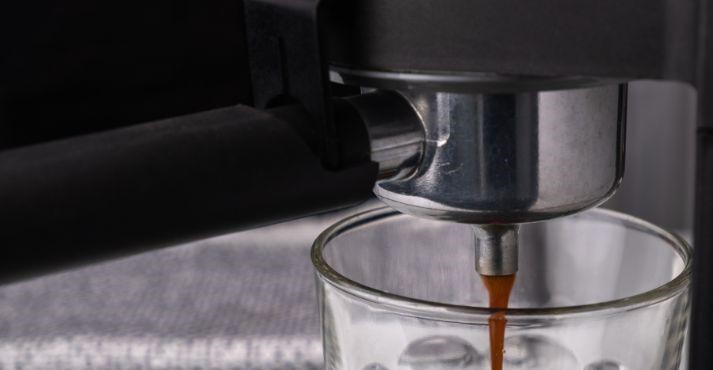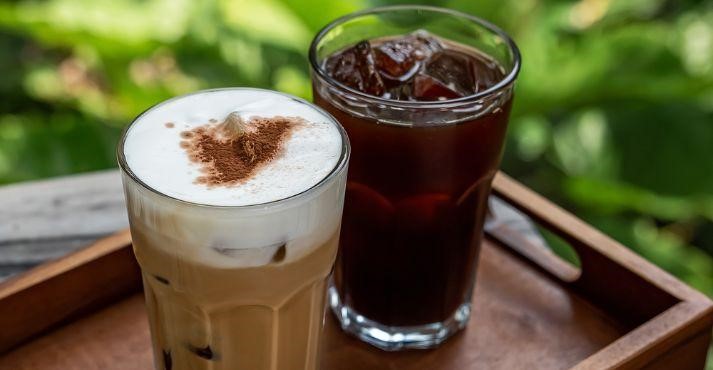Brewing coffee via drip method– It’s not just a technique; it’s a morning ritual for millions worldwide, known for its straightforward brewing process and the rich, aromatic cup it produces.
This method wins hearts in homes and cafes due to its simplicity and convenience. Remarkably, about 29% of coffee lovers choose drip brew coffee as part of their daily routine, demonstrating its immense popularity.
This comprehensive guide will explore everything that makes drip-brewed coffee unique. From understanding the basics, including equipment and brewing steps, to exploring how this beloved method compares with other brewing techniques, we aim to provide a complete overview.
We’ll also share tips and tricks to help you make the perfect cup of drip coffee at home and understand why this method is a favorite among coffee enthusiasts of all ages.
What is Drip Coffee?
So, what is drip coffee? It is a brewing method where hot water flows over ground coffee, dripping slowly through a filter and into a pot or carafe below. This process ensures the water has enough time to extract the coffee’s flavors and aromas effectively, resulting in a consistently delicious brew.
A typical cup of drip coffee contains about 95 mg of caffeine, providing that perfect kick to start your day without overwhelming your senses.
It’s also relatively minimal nutritionally, with around 2 calories per cup, which makes it an excellent choice for those monitoring their intake but still want the whole coffee experience.
Drip-brewed coffee has evolved significantly over the years, with modern machines offering a range of customizable features to suit any taste.
By exploring resources like this detailed guide on coffee types, you can learn more about the variety of coffee and how drip coffee fits into the broader spectrum.
How is Drip Coffee Made? A Step-by-Step Guide

We will now examine how drip brew coffee is made in a step-by-step, easy-to-follow explanation.
Equipment Breakdown
To get started with making drip coffee, you’ll need the following essential equipment:
- Drip Coffee Maker: This is the heart of the drip coffee brewing process. There are many models and brands to choose from, each offering different features. Popular brands include Melitta, Braun, and Philips, which are known for their reliability and quality. These machines can range from basic models for straightforward coffee brewing to more advanced versions with programmable settings and built-in grinders.
- Coffee Filters: These are necessary to hold the coffee grounds and ensure a smooth brew without sediment. Filters can be paper, which is disposable and can help remove some of the coffee oils for a cleaner cup, or reusable, which is more environmentally friendly and retains more oil for a richer flavor.
- Coffee Grinder: A grinder is essential for using whole beans to maximize freshness and flavor. The grind size for drip coffee should be medium, similar to the texture of sand. This ensures the best extraction without making the brew too bitter or weak.
- Measuring Tools: Consistency is critical to making great coffee. Use a digital scale to measure your coffee grounds accurately and a measuring cup or spoon for water to get the correct coffee-to-water ratio.
The Brewing Process
Brewing the perfect cup of drip coffee is an art that you can master with some practice and patience. Here’s how you can do it:
- Grind the Coffee Beans: If you’re using whole beans, grind them to a medium coarseness right before brewing. The fresher the grind, the more flavorful your coffee will be. If you need clarification on the grind size, remember that it should resemble sea salt or sand in texture, allowing optimal flavor extraction.
- Prepare the Coffee Maker: Place a coffee filter in your coffee maker’s basket. If you use a paper filter, rinse it with hot water first to remove any paper taste. This step also warms up the brewer, which helps maintain a consistent brewing temperature.
- Add Coffee Grounds: Add the ground coffee to the filter. A general rule is to use about 1 to 2 tablespoons of coffee for every 6 ounces of water, but you can adjust this ratio based on how strong you like your drip-brewed coffee.
- Fill the Water Reservoir: Pour fresh, filtered water into the reservoir. Water quality significantly affects the taste, so use filtered or bottled water if possible. This will ensure there are no unwanted flavors in your coffee.
- Start the Brewing Cycle: Turn on your drip coffee maker and let it do its work. The machine will heat the water to the right temperature (usually around 195 to 205 degrees Fahrenheit) and then spray it evenly over the coffee grounds. This process should take several minutes as the water drips through the grounds, absorbing their flavors and aromas before finally dripping into the carafe below.
- Serve and Enjoy: Once the drip coffee brewing process is complete, stir the coffee in the carafe to ensure the flavor is uniform. Pour yourself a cup and enjoy! If you have leftover coffee, you can quickly keep it on the warming plate without losing flavor.
Tips for a Perfect Drip Coffee Cup

Making drip-brew coffee may be straightforward, but a few expert tips can enhance your brew to perfection:
- Use High-Quality Coffee Beans: Your coffee beans will significantly impact the flavor. Go for fresh, high-quality beans from reputable sources. Beans like robusta coffee beans offer distinct flavors and aromas that elevate your morning cup from good to exceptional.
- Grind Size Matters: The right grind size allows water to extract coffee flavors efficiently. For drip coffee, a medium grind is ideal because it provides the perfect balance for water to extract flavors without passing through too quickly or too slowly.
- Water Quality is Crucial: Your water should be clean and fresh. Filtered water is best as it removes impurities that can alter the taste of your coffee. Remember, coffee is over 98% water, so the better your water tastes, the better your coffee will taste.
- Mind the Coffee-to-Water Ratio: A standard ratio is 1 to 2 tablespoons of coffee for every 6 ounces of water. However, this can be adjusted to suit your taste. If you prefer a more potent brew, add more coffee; for a lighter cup, add less.
- Maintain Your Coffee Maker: Regular cleaning and maintenance of your coffee maker are essential for consistent quality. Follow the manufacturer’s instructions for cleaning and descaling regularly to remove mineral buildup, which can affect the taste and performance of your machine.
- Experiment with Brew Times: Depending on your coffee maker, the drip coffee brew time can affect the extraction and flavor. If your coffee tastes too bitter, it might be over-extracting; if it needs to be stronger, it may need more time. Experiment to find your perfect balance.
For more tips on perfecting your brew with different methods, visit our article on the best coffee brewing methods.
Types of Drip Coffee Makers

When it comes to choosing a drip coffee maker, there are several types to consider, each with its unique features and benefits:
- Automatic Drip Coffee Makers are the most common type in homes and many coffee shops. They are prized for their ease of use and consistency. Features can include programmable start times, built-in grinders, water filtration, and varying strength settings. This type is perfect for those who want good coffee with minimal effort.
- Manual Pour-Over Drippers: These devices, like the Chemex or Hario V60, require a more hands-on approach but offer greater control over the brewing process. By pouring hot water over the coffee grounds, you can adjust the flow and saturation, allowing for a more nuanced flavor profile. This method is favored by coffee enthusiasts who enjoy the ritual of brewing and the ability to fine-tune their cups.
- Single-Serve Drip Brewers: Machines like Keurig, Nespresso, or other pod-based systems are designed for convenience and speed. They use pre-measured coffee pods to make a single cup of drip-brew coffee at a time, which is ideal for those who want a quick, consistent cup without any mess. However, these machines may offer less control over the brew and often come with a higher cost per cup due to the price of pods.
- Thermal Carafe Drip Coffee Makers: These are similar to automatic drip machines but with a thermal carafe instead of a glass carafe on a hot plate. This design helps keep coffee hot for longer without the risk of overcooking or burning the brew, preserving flavor for hours.
Benefits of Drip Coffee
There are many reasons why drip brew coffee remains a favorite brewing method for millions of people around the world. Here are some of the top benefits:
- Consistent Quality: Drip coffee makers are designed to brew coffee at the optimal temperature and time to extract maximum flavor. This consistency ensures that every pot of coffee is as good as the last, making it ideal for those who appreciate reliability in their brew.
- Customizable Brew Strength: Many drip machines offer settings that allow you to control the strength of drip-brewed coffee. You can adjust the settings to suit your taste, whether you prefer a milder flavor or a strong, robust cup.
- Convenience: Drip coffee machines make your coffee routine as effortless as possible, with features like programmable start times, auto shut-off, and even built-in grinders.
- Suitable for Large Quantities: Drip brewers typically make more coffee at once than other methods, such as single-serve or pour-over. This makes them an excellent choice for families or anyone who needs multiple cups to start their day.
- Affordability: While there are high-end drip coffee makers, many affordable options do a fantastic job. This accessibility makes drip brew coffee a practical choice for many coffee lovers.
Drip Coffee vs. Other Brewing Methods

Drip Coffee vs. Pour Over
While drip coffee and pour-over involve hot water passing through coffee grounds, the key difference lies in their brewing technique. Drip brew coffee is fully automated, making it convenient and consistent, ideal for those busy mornings.
Pour-over, however, is manual. It requires you to pour hot water over the grounds slowly, which can enhance the coffee’s flavor by allowing more oils and aromas to be extracted.
This manual method gives you more control over the brewing time and temperature, potentially leading to a more flavorful cup. However, it also requires more patience and practice.
Drip Coffee vs. French Press
The French Press offers a distinctly different experience than drip coffee. It brews by steeping coffee grounds in hot water for several minutes and pressing a plunger to separate the grounds from the brewed coffee.
This method allows more of the coffee’s oils and fine particles to remain in the cup, resulting in a more prosperous, fuller-bodied flavor.
On the other hand, Drip Brew coffee uses a filter that removes most of the oils and fines, leading to a cleaner, lighter cup. If you prefer a bolder, more textured coffee, the French Press might be for you. However, if convenience and a balanced flavor are what you seek, then drip coffee is the way to go.
Drip Coffee vs. Americano
An Americano is a diluted espresso made by adding hot water to a shot of espresso. This process gives it a similar strength but a different flavor profile from drip brew coffee. While both are popular coffee styles, they cater to different tastes and preferences.
Drip coffee is brewed slowly, allowing for a complex extraction that results in a well-balanced cup. An Americano, with its espresso base, tends to have a richer, more intense flavor with a slightly thinner body than drip coffee.
The choice between the two often comes down to whether you prefer the quick intensity of espresso or the subtle complexity of a longer brew time.
Drip Coffee (FAQs)
Is drip coffee more robust?
Regarding caffeine content, drip-brewed coffee is generally more robust than other brewing methods, like some manual brews, but espresso is more robust. The strength can vary based on the coffee-to-water ratio and the grind size.
What is the difference between drip coffee and regular coffee?
“drip coffee” refers explicitly to coffee made with a drip coffee maker, where water is passed through coffee grounds in a filter. “Regular coffee” refers to any brewed coffee, regardless of the method used, including espresso, French press, etc.
What is another name for drip coffee?
Drip coffee is often also called “filter coffee” because of the method of brewing that involves filtering hot water through ground coffee.
Conclusion
Drip coffee combines simplicity with the depth of flavor, making it a permanent favorite in the coffee world.
Whether you’re a novice just starting your coffee journey or a seasoned enthusiast looking to perfect your brew, our write-up on what drip coffee is and how it is brewed has offered a foundation for exploring coffee’s vast and prosperous world.
We’ve examined the equipment and coffee-making methods and compared them to other methods to help you understand the brewing process. Drip coffee is great because it’s simple and has a long history of making people happy.
So, the next time you make a pot of coffee, remember that you’re part of a worldwide tradition millions of people enjoy daily.













